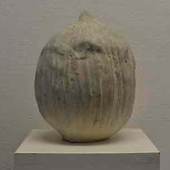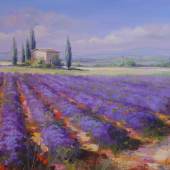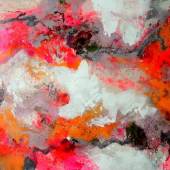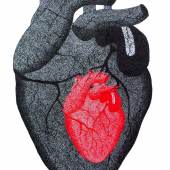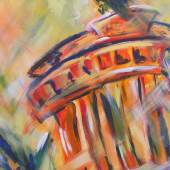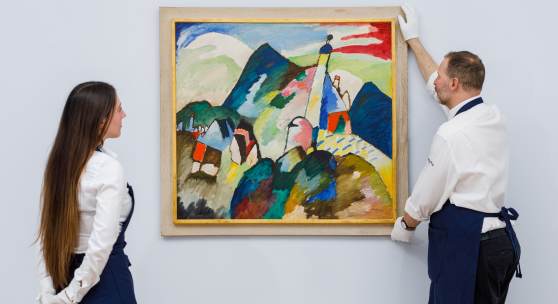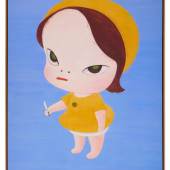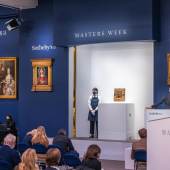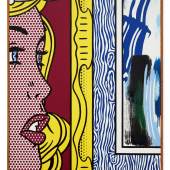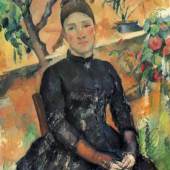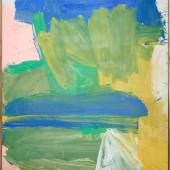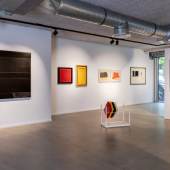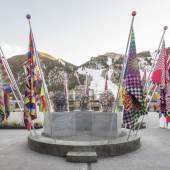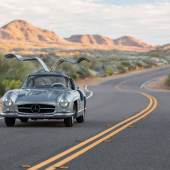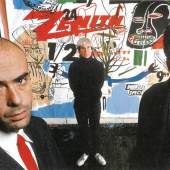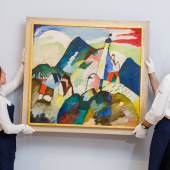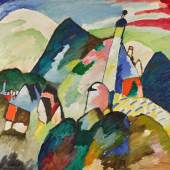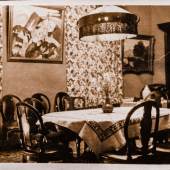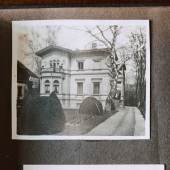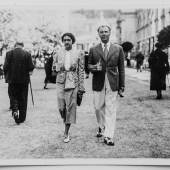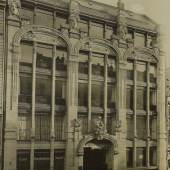Sotheby’s
Newly-Restituted Kandinsky Masterpiece
-
Auktion01.03.2023
As the Nazi grip on Germany tightened, the life of the Stern family became increasingly difficult. They were determined to remain in Berlin, but two years after Siegbert’s death in 1935 – as anti-Jewish measures continued to escalate – Johanna Margarete fled, first to Southern Germany, via Switzerland where she visited her brother, and then to the Netherlands. With the help of her son Hans, she was able to retrieve some of her assets, including her furniture and art collection, from Germany.
By 1941, Johanna Margarete, continuing to face persecution as the Nazis occupied Holland, had been declared stateless by the regime. In exchange for the promise of an emigration visa, she handed over a portrait by Henri Fantin-Latour (specially acquired for the purpose, at great cost) to the Dienststelle Mühlmann – an agency set up by the Nazis to acquire works for Germany. The visa never came, and Johanna Margarete was soon forced to sell many of her family’s artworks to survive. She went into hiding in Bussum, near Amsterdam in 1942, but was finally captured and deported to Auschwitz, where she was murdered in May 1944.
One of the Stern’s daughters, Luise, and her husband, also living in Amsterdam, were similarly taken by the Nazis, deported and murdered. Just before they were arrested, however, they managed to arrange for their seven-year-old daughter Dolly to be taken into hiding by their nanny and her husband - which involved the young child making a terrifying solo journey across occupied Amsterdam on various trams. Dolly spent most of the next two and a half years concealed in a single tiny room, only on rare evenings able to venture cautiously into the rest of the house. The front room of the house was rented out for use by doctors and their patients, and so for the majority of her time there, Dolly was hardly able to move for fear of making any noise that might alert to her presence. Whenever word got round that one of the frequent Nazi searches was imminent, Dolly would hide either in a small, black, spider-infested recess under the floorboards, or behind cleaning materials in the cupboard below the kitchen sink. Throughout this time, all Dolly had for company was a children’s bible and a book of fairytales. The household itself was harsh and loveless, which only amplified Dolly’s mental anguish.
After the war, she emerged a 10-year-old orphan, starting to piece together the fragments of her former life. This was a long and torturous process, made more difficult by the couple who had sheltered her during the war years, who then resisted efforts by her surviving relatives to bring her to live with them in New York.
Following her death in 2014, Dolly’s diaries – recounting in intensely moving detail the unimaginable events and impact of the war years and those that followed – will soon be published by her family. Remarkably, these memoirs are permeated by a sense of how she strove to draw pleasure from the simple, good things in life, and appreciated the beauty of nature all around her. At the same time, Dolly’s utmost inner aim was a stoic one – to die without hatred and to understand in depth the wrongs that she had experienced.
MURNAU & THE PATH TO ABSTRACTION
Kandinsky and Gabriele Münter (his lover and fellow artist) visited the Bavarian mountain village of Murnau in the summer of 1908. They quickly fell in love with the place, together purchasing a house there the following year where they spent long happy summers, often with their artist friends Alexei Jawlensky and Marianne von Werefkin. The village and its surroundings provided a rich repertoire of subjects that were to become central motifs in Kandinsky’s work during these critical years, which saw him take his first steps towards abstraction, heralding a radical change in the narrative of Western art.
In Murnau mit Kirche II, Kandinsky synthesises all the influences he had absorbed during his time in Paris in 1906 to 1907 (Paul Cézanne's deconstruction of form; the vibrant colour palette of the Fauves, and Vincent van Gogh’s unique landscape idiom), creating something entirely different and absolutely his own: an explosion of colour and form, which - ever more divorced from naturalistic representation - affect the viewer in the emotive and spiritual manner Kandinsky was to articulate, just a year later, in his seminal text, Concerning the Spiritual in Art.
The legacy of definitive works by Kandinsky like Murnau mit Kirche II is clearly distinguished in the art of the Abstract Expressionists working in post-war America, such as Jackson Pollock and Willem de Kooning, who were indebted to Kandinsky and his pioneering art for taking the first steps on the path to abstraction.
-
18.11.2021Sotheby’s To Announce Live Bidding Increments in Ether (ETH) Cryptocurrency For Banksy...
-
28.01.2022Sotheby’s New York Master Paintings and Sculpture Part ITotals $91 MillionSecond Highest...
-
15.11.2021 - 19.11.2021Sotheby’s Lifts the Curtain onOne of the Most Important Sales Series Ever Staged $1 BILLION...
-
Wo Sie die Werke Cézannes besichtigen können: National Gallery of Art, Washington...
-
16.04.2024 - 15.09.2024Two stays in Italy inspired Willem de Kooning to bold experiments in his art, a new exhibition in...
-
17.04.2024 - 17.05.2024Marking 50 years of Sotheby's in the Belgian capital, an esoteric selling exhibition is on...
-
20.04.2024 - 24.11.2024Jeffrey Gibson on Representing the United States and Himself By Melissa Smith | Feb 16, 2024 From...
-
13.05.2024 - 15.05.2024Sotheby’s Sealed is thrilled to present this spectacular Mercedes-Benz 300 SL Alloy...
-
14.05.2024Warhol & Basquiat’s Collaboration Series Masterwork To Highlight Sotheby’s...
-
01.03.2023Auktion »
Auction: 2 April
Preview: 31 March – 2 April
